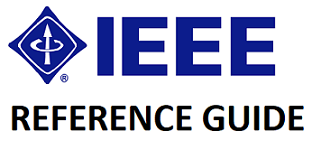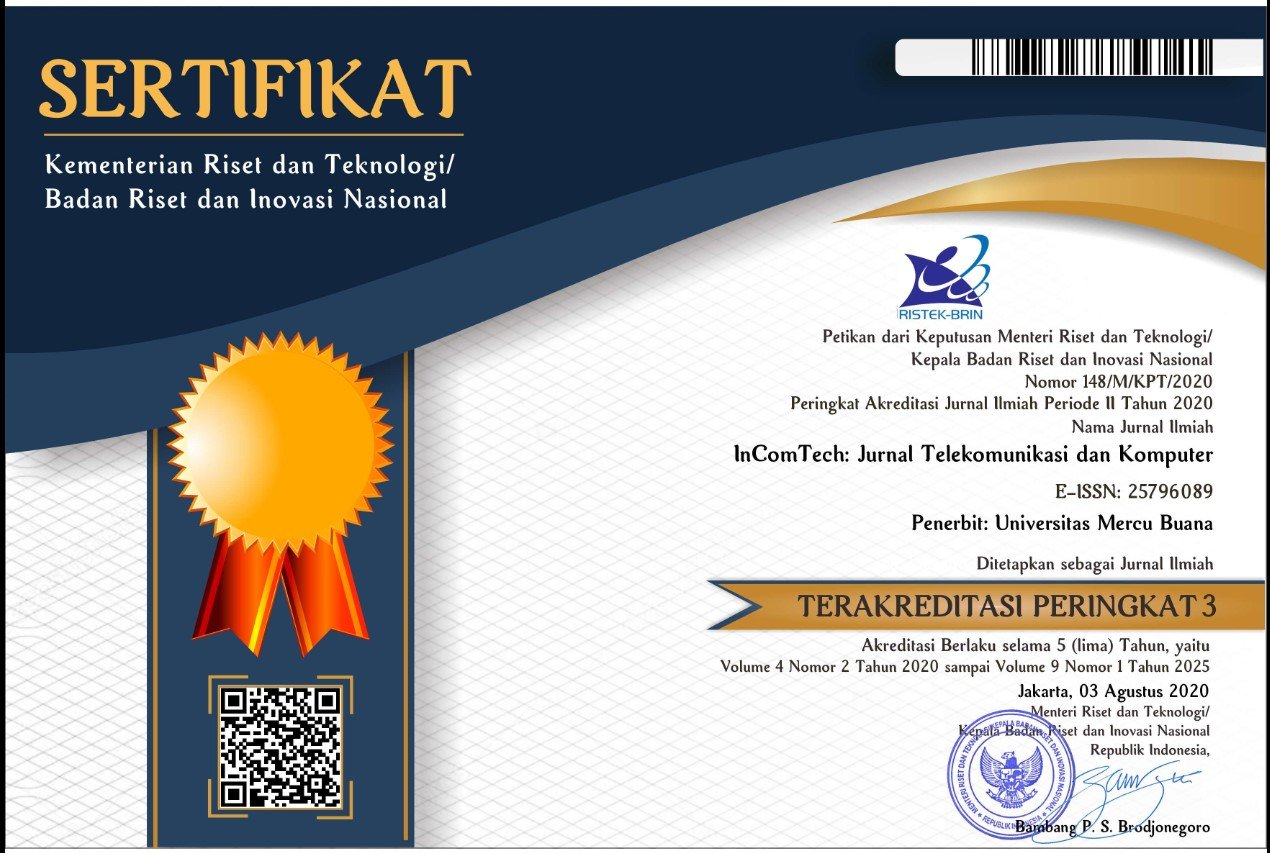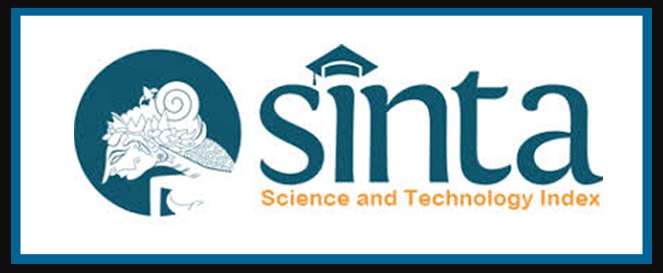Prediction of Sleep Disorder: Insomnia Using AdaBoost Ensemble Learning Algorithm with Grid Search Optimization
Abstract
Keywords
Full Text:
PDFReferences
T. Roth, “Insomnia: Definition, prevalence, etiology, and consequences,” J. Clin. Sleep Med., vol. 3, no. 5 SUPPL., pp. 3–6, 2007, doi: 10.5664/jcsm.26929.
M. M. Islam, A. K. M. Masum, S. Abujar, and S. A. Hossain, “Prediction of chronic Insomnia using Machine Learning Techniques,” 2020 11th Int. Conf. Comput. Commun. Netw. Technol. ICCCNT 2020, 2020, doi: 10.1109/ICCCNT49239.2020.9225570.
A. Seth, B. Satish Babu, and S. S. Iyenger, “Machine Learning Model for Predicting Insomnia Levels in Indian College Students,” CSITSS 2019 - 2019 4th Int. Conf. Comput. Syst. Inf. Technol. Sustain. Solut. Proc., pp. 1–6, 2019, doi: 10.1109/CSITSS47250.2019.9031041.
M. Angelova, C. Karmakar, Y. Zhu, S. P. A. Drummond, and J. Ellis, “Automated Method for Detecting Acute Insomnia Using Multi-Night Actigraphy Data,” IEEE Access, vol. 8, pp. 74413–74422, 2020, doi: 10.1109/ACCESS.2020.2988722.
A. A. bin B. Samsiah Jayos, Lau Ngie Hing, “Insomnia mental health issues pandemic covid-19,” Psycho Idea, vol. 20, pp. 1–10, 2022, doi: http://dx.doi.org/10.30595/psychoidea.v20i1.10878.
D. Yulia et al., “Insomnia During COVID-19 Pandemic,” J. Ilm. Kesehat. Sandi Husada, vol. 9, no. 2, pp. 1111–1116, 2020, doi: 10.35816/jiskh.v10i2.483.
M. D. Manzar et al., “Insomnia symptoms and their association with anxiety and poor sleep hygiene practices among ethiopian university students,” Nat. Sci. Sleep, vol. 12, pp. 575–582, 2020, doi: 10.2147/NSS.S246994.
Y. Sincihu and N. Kurniawati, “Insomnia is not a Risk Factor for Impaired Cognitive Function in Elderly,” Qanun Med. - Med. J. Fac. Med. Muhammadiyah Surabaya, vol. 2, no. 2, 2018, doi: 10.30651/jqm.v2i2.1446.
S. S. Kim, “Recent Trends of Artificial Intelligence and Machine Learning for Insomnia Research,” Chronobiol. Med., vol. 3, no. 1, pp. 16–19, 2021, doi: https://doi.org/10.33069/cim.2021.0008.
M. M. I. Siam, “Dataset of Insomniac and normal people,” vol. 1. Mendeley Data, Oct. 2021, doi: 10.17632/JR5N4PRGFV.1.
Kedar Potdar, Taher S. Pardawala, and Chinmay D. Pai, “A Comparative Study of Categorical Variable Encoding Techniques for Neural Network Classifiers,” Int. J. Comput. Appl., vol. 175, no. 4, p. 375, 2017.
V. Gajera, R. Gupta, P. K. Jana, and I. S. Member, “An Effective Multi-Objective Task Scheduling Algorithm using Min-Max Normalization in Cloud Computing,” 2016 2nd Int. Conf. Appl. Theor. Comput. Commun. Technol., pp. 812–816, 2016, doi: 10.1109/ICATCCT.2016.7912111.
K. A. Widagdo, K. Adi, and R. Gernowo, “Kombinasi Feature Selection Fisher Score dan Principal Component Analysis (PCA) untuk Klasifikasi Cervix Dysplasia,” J. Teknol. Inf. dan Ilmu Komput., vol. 7, no. 3, p. 565, 2020, doi: 10.25126/jtiik.2020702987.
M. Anshori, F. Mahmudy, and A. A. Supianto, “Preprocessing Approach for Tuberculosis DNA Classification using Support Vector Machines ( SVM ),” J. Inf. Technol. Comput. Sci., vol. 4, no. 3, pp. 233–240, 2019, doi: https://doi.org/10.25126/jitecs.201943113.
H. Singh, D. Gupta, and A. K. S. Kushwaha, “Multiclass Object Recognition and Classification Using Boosting Technique,” 2018 9th Int. Conf. Comput. Commun. Netw. Technol. ICCCNT 2018, pp. 1–6, 2018, doi: 10.1109/ICCCNT.2018.8493890.
G. Chen, Y. Zhang, and D. Tang, “A noise classification algorithm based on SAMME and BP neural network,” 2018 IEEE 3rd Int. Conf. Big Data Anal. ICBDA 2018, no. 4, pp. 274–278, 2018, doi: 10.1109/ICBDA.2018.8367691.
E. O. Ogunseye, C. A. Adenusi, A. C. Nwanakwaugwu, S. A. Ajagbe, and S. O. Akinola, “Predictive Analysis of Mental Health Conditions Using AdaBoost Algorithm,” ParadigmPlus, vol. 3, no. 2, pp. 11–26, 2022, doi: 10.55969/paradigmplus.v3n2a2.
M. I. Ramadhani, A. E. Minarno, and E. B. Cahyono, “Vehicle Classification using Haar Cascade Classifier Method in Traffic Surveillance System,” Kinet. Game Technol. Inf. Syst. Comput. Network, Comput. Electron. Control, vol. 3, no. 1, pp. 57–64, 2017, doi: 10.22219/kinetik.v3i1.546.
V. Chouvatut, C. Yotsombat, R. Sriwichai, and W. Jindaluang, “Multi-view hand detection applying viola-jones framework using SAMME AdaBoost,” Proc. 2015-7th Int. Conf. Knowl. Smart Technol. KST 2015, pp. 30–35, 2015, doi: 10.1109/KST.2015.7051476.
M. Anshori, F. Mar’i, and F. A. Bachtiar, “Comparison of Machine Learning Methods for Android Malicious Software Classification based on System Call,” Proc. 2019 4th Int. Conf. Sustain. Inf. Eng. Technol. SIET 2019, pp. 343–348, 2019, doi: 10.1109/SIET48054.2019.8985998.
P. Liashchynskyi and P. Liashchynskyi, “Grid Search, Random Search, Genetic Algorithm: A Big Comparison for NAS,” no. 2017, pp. 1–11, 2019, doi: 10.48550/arXiv.1912.06059.
G. S. K. Ranjan, A. Kumar Verma, and S. Radhika, “K-Nearest Neighbors and Grid Search CV Based Real Time Fault Monitoring System for Industries,” 2019 IEEE 5th Int. Conf. Converg. Technol. I2CT 2019, pp. 9–13, 2019, doi: 10.1109/I2CT45611.2019.9033691.
Y. Sun, S. Ding, Z. Zhang, and W. Jia, “An improved grid search algorithm to optimize SVR for prediction,” Soft Comput., vol. 25, no. 7, pp. 5633–5644, 2021, doi: 10.1007/s00500-020-05560-w.
S. Gupta and M. K. Gupta, “Computational Prediction of Cervical Cancer Diagnosis Using Ensemble-Based Classification Algorithm,” Comput. J., vol. 65, no. 6, pp. 1527–1539, 2022, doi: 10.1093/comjnl/bxaa198.
Z. B. Demsar J, Curk T, Erjavec A, Gorup C, Hocevar T, Milutinovic M, Mozina M, Polajnar M, Toplak M, Staric A, Stajdohar M, Umek L, Zagar L, Zbontar J, Zitnik M, “Orange: Data Mining Toolbox in Python,” J. Mach. Learn. Res., vol. 14, pp. 2349–2353, 2013, [Online]. Available: http://jmlr.org/papers/v14/demsar13a.html.
DOI: http://dx.doi.org/10.22441/incomtech.v14i1.19306

This work is licensed under a Creative Commons Attribution-NonCommercial 4.0 International License.
Publisher Address:
Magister Teknik Elektro, Universitas Mercu Buana
Jl. Meruya Selatan 1, Jakarta 11650
Phone (021) 31935454/ 31934474
Fax (021) 31934474
Email: [email protected]
Website of Master Program in Electrical Engineering
http://mte.pasca.mercubuana.ac.id
pISSN: 2085-4811
eISSN: 2579-6089
Jurnal URL: http://publikasi.mercubuana.ac.id/index.php/Incomtech
Jurnal DOI: 10.22441/incomtech

Ciptaan disebarluaskan di bawah Lisensi Creative Commons Atribusi-NonKomersial 4.0 Internasional
The Journal is Indexed and Journal List Title by:














